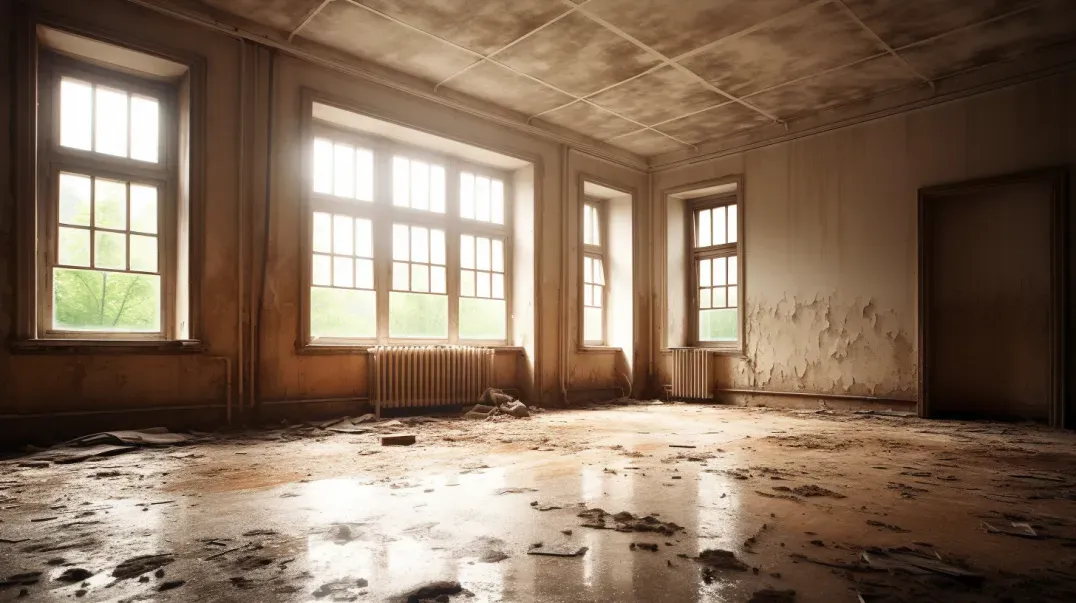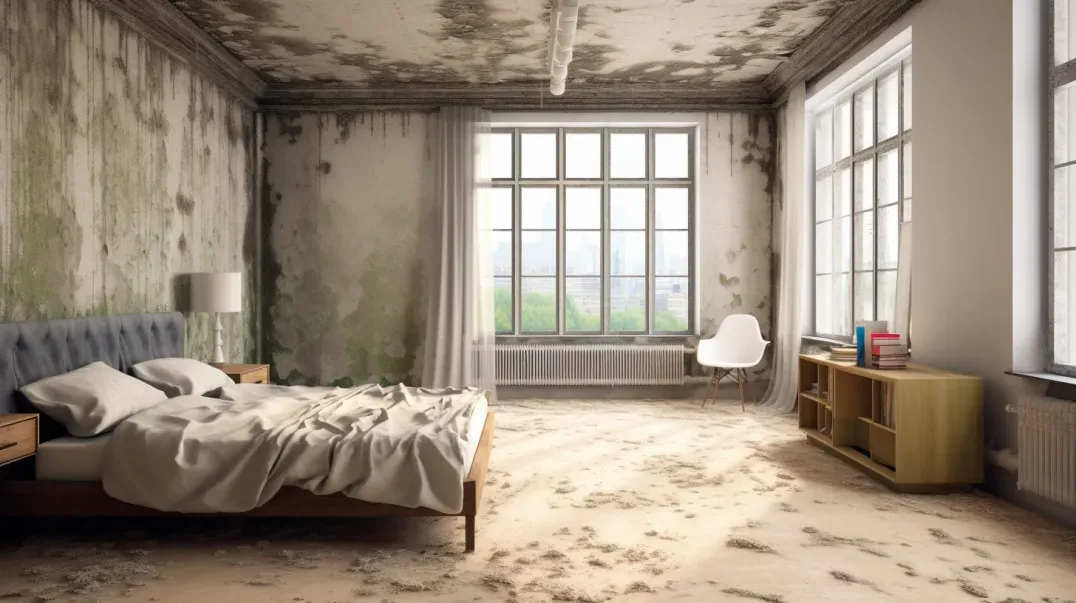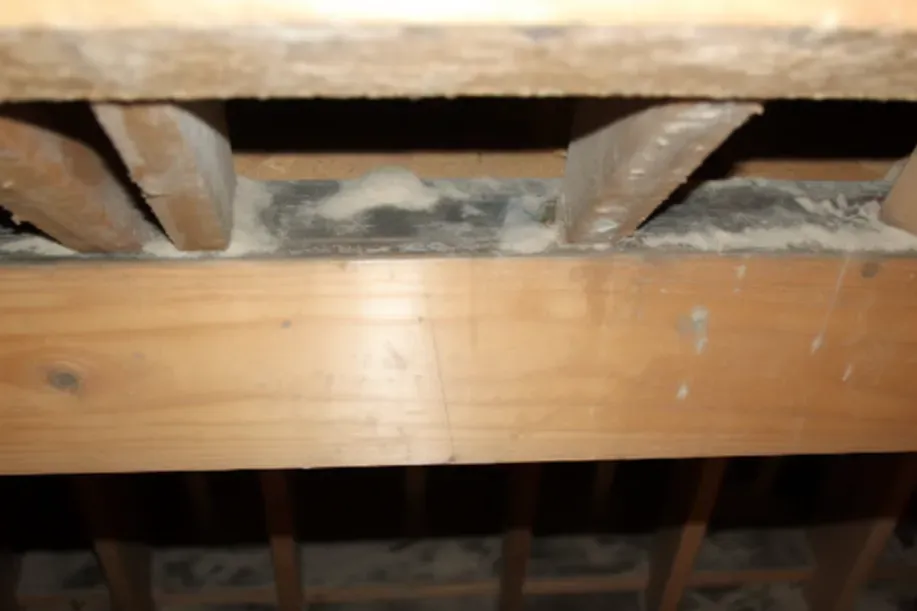Visual Guide to Crawl Space Mold
Mold growth in crawl spaces is a common yet often overlooked issue in many homes. This blog post aims to demystify the reasons behind mold proliferation in these hidden areas and highlight the critical role of visual identification in combating this silent intruder. Understanding why mold finds crawl spaces an ideal breeding ground is essential for homeowners to effectively prevent and address this problem.
Crawl spaces, with their unique environment characterized by limited airflow, high humidity, and often, inadequate light, create a perfect haven for mold to flourish. These conditions, coupled with the presence of organic materials like wood and insulation, provide mold with the necessary nutrients and environment to grow unchecked. The consequences of mold growth are not just structural damage to your home but also potential health risks to its inhabitants.
The importance of visual identification of mold cannot be overstated. Early detection through visual cues is often the first line of defense against mold infestation. Recognizing signs of mold growth, such as discoloration, fuzzy growths, or deterioration of materials, is crucial in initiating timely remediation efforts. This post will guide you through understanding the conducive conditions for mold growth in crawl spaces and equip you with the knowledge to identify mold visually, helping you maintain a healthier, mold-free home.
Join us as we delve into the world of mold in crawl spaces, exploring the reasons behind its growth and the vital role of visual identification in safeguarding your home against this hidden threat.
The Basics of Mold Growth
Understanding the fundamentals of mold growth is essential for homeowners to effectively prevent and manage mold issues. This section provides basic information about what mold is, its various types, and the conditions under which it thrives, with a focus on why crawl spaces are particularly prone to mold growth.
What is Mold?
Mold is a type of fungus that plays a crucial role in nature by breaking down dead organic matter. However, when it grows unchecked in homes, it can cause problems. Key points about mold include:
- Types of Mold: There are thousands of mold species, varying in color, texture, and growth patterns. Common types found in homes include Aspergillus, Penicillium, and Stachybotrys (often referred to as black mold).
- Growth Conditions: Mold requires moisture, warmth, and organic material to grow. It reproduces through tiny spores that travel through the air, which can start new mold colonies when they land on suitable surfaces.
- Health Implications: While mold is not harmful in small quantities, large infestations can cause health issues, especially for those with allergies or respiratory conditions.
Why Crawl Spaces are Prone to Mold
Crawl spaces are particularly susceptible to mold growth due to several factors:
- High Humidity: Crawl spaces often have higher humidity levels, which provide the moisture mold needs to grow.
- Poor Ventilation: Many crawl spaces lack proper ventilation, leading to stagnant air and moisture accumulation.
- Organic Materials: Crawl spaces typically contain wood and other organic materials that mold can feed on.
- Limited Light: The lack of light in crawl spaces does not deter mold growth, as mold does not require sunlight to proliferate.
- Water Intrusion: Crawl spaces are prone to water intrusion from leaks or flooding, which can create ideal conditions for mold growth.
By understanding these factors, homeowners can take proactive steps to monitor and reduce the risk of mold growth in their crawl spaces.
Visual Indicators of Mold in Crawl Spaces
Identifying mold in crawl spaces is crucial for maintaining a healthy home environment. This section focuses on the visual indicators of mold presence and how to distinguish mold from mildew, which is often confused with mold but requires different treatment.
Common Signs of Mold Presence
Mold can manifest in various visual forms, making it detectable to the vigilant homeowner. Key visual signs include:
Color Variations: Mold appears in a range of colors, including but not limited to:
- Black: Often found in damp areas and can indicate a more toxic variety of mold.
- Green: Commonly seen on walls, carpets, and damp wood.
- White: Can look like a thin, thread-like growth, sometimes with a powdery texture.
- Other Colors: Mold can also appear in shades of yellow, blue, or red.
Textural Differences: The texture of mold can vary significantly, providing another visual clue:
- Fuzzy: Indicates active mold growth, often found in shades of green or black.
- Slimy: Usually seen in areas with high moisture, indicative of active mold colonies.
- Powdery or Cottony: Often a sign of older or drier mold growth.
Mold vs. Mildew - Recognizing the Difference
Understanding the difference between mold and mildew is important for proper treatment:
Mold Characteristics:
- Typically appears in thicker, more raised patches.
- Has a fuzzy or slimy texture.
- Often found in a wider range of colors.
- Usually indicates a more serious issue and can penetrate surfaces deeper.
Mildew Characteristics:
- Appears as a flat patch, often white or gray.
- Has a powdery or fluffy appearance.
- Commonly found on surfaces like damp paper, fabric, or walls.
- Easier to treat and more surface-level compared to mold.
Recognizing these visual differences is crucial in determining the appropriate response and remediation strategy for mold and mildew in crawl spaces.
Types of Mold Commonly Found in Crawl Spaces
Crawl spaces, due to their unique conditions, are prone to various types of mold. Understanding these types can help in effective identification and remediation. This section covers some of the most common molds found in crawl spaces, their appearance, health risks, and typical growth patterns.
Stachybotrys (Black Mold)
- Appearance: Stachybotrys, commonly known as black mold, has a distinctive dark color, ranging from greenish-black to black. It often appears slimy due to its wet growth environment.
- Health Risks: Black mold is notorious for its potential to cause respiratory issues, allergic reactions, and in some cases, more severe health problems, especially in individuals with pre-existing respiratory conditions.
- Common Locations: It typically grows on materials with high cellulose content like wood, paper, or gypsum board, especially when these materials have been exposed to prolonged moisture.
Aspergillus
- Visual Characteristics: Aspergillus mold is less conspicuous, often appearing in various colors like yellow, green, or white. It has a powdery texture and is commonly found indoors.
- Associated Health Concerns: This mold can cause allergic reactions and respiratory infections. Some species of Aspergillus produce mycotoxins, which can be harmful if inhaled over a prolonged period.
Penicillium
- Identification: Penicillium is known for its blue or green color and velvety texture. It's one of the faster-growing molds.
- Typical Growth Patterns: This mold is commonly found on materials damaged by water, including carpets, wallpapers, and insulation. It thrives in environments with high humidity.
Other Common Molds
- Cladosporium: Often appearing as a black or green substance, Cladosporium can grow in cooler temperatures and is typically found on fabrics and wood surfaces.
- Alternaria: Recognizable by its velvety texture with dark green or brown hairs, Alternaria is a common allergen and thrives in damp places.
- Others: There are numerous other molds that can inhabit crawl spaces, each with unique characteristics and potential health implications.
Understanding the types of mold commonly found in crawl spaces is crucial for homeowners to effectively identify and address mold issues. Each type of mold has specific characteristics and growth patterns, which can inform the best approach for remediation and prevention.
Health and Structural Implications of Crawl Space Mold
Mold in crawl spaces poses significant health and structural risks. Understanding these implications is crucial for homeowners to take timely and effective action. This section explores the health risks associated with different types of mold and how mold can affect the integrity of building materials.
Health Risks Associated with Different Molds
Different molds found in crawl spaces can lead to various health issues:
- Respiratory Problems: Many molds, especially black mold (Stachybotrys), can cause respiratory issues, including coughing, wheezing, and in severe cases, asthma attacks.
- Allergic Reactions: Molds like Aspergillus and Penicillium are known allergens, potentially causing symptoms like sneezing, runny nose, red eyes, and skin rash.
- Mycotoxin Exposure: Certain molds produce mycotoxins, which can be harmful when inhaled over time. Prolonged exposure to these toxins can lead to more serious health conditions, including neurological problems and, in extreme cases, death.
- Immune System Impact: For individuals with compromised immune systems, exposure to mold can lead to more severe health complications, including infections.
Impact of Mold on Home Structures
Mold in crawl spaces can also have detrimental effects on the structural integrity of a home:
- Wood Decay: Mold thrives on organic materials like wood. Over time, it can weaken wooden structures, leading to decay and compromising the home's structural stability.
- Material Deterioration: Mold can break down various building materials, including drywall, insulation, and carpeting, necessitating costly repairs and replacements.
- Reduced Air Quality: Mold can affect indoor air quality, leading to musty odors and an overall decrease in the comfort and safety of the living environment.
- Property Value Impact: The presence of mold can significantly reduce a property's value and can be a deterrent for potential buyers.
Addressing mold in crawl spaces is not just a matter of health; it's also essential for maintaining the structural integrity and value of your home. Regular inspections and prompt remediation of any mold issues are key to protecting both the inhabitants and the building itself.
Steps for a Thorough Mold Inspection in Crawl Spaces
Conducting a thorough mold inspection in crawl spaces is essential for maintaining a healthy home environment. This section provides a detailed guide on preparing for a mold inspection and a systematic process for inspecting different areas of a crawl space.
Preparing for Inspection
Before starting the inspection, it's important to take the following safety measures and gather necessary tools:
Safety Measures:
- Wear protective gear, including gloves, a N95 mask or respirator, and protective eyewear.
- Ensure adequate lighting in the crawl space for visibility.
- Be aware of potential hazards like sharp objects, electrical wiring, or pests.
Tools Needed:
- Flashlight or headlamp for better visibility.
- Screwdriver or similar tool to probe wood for rot or damage.
- Digital camera or smartphone to document findings.
- Moisture meter to measure moisture levels in wood and other materials.
- Mirror for viewing hard-to-see areas.
Systematic Inspection Process
Follow this step-by-step guide to inspect different areas of a crawl space for mold:
Visual Inspection:
- Start with a thorough visual check for any signs of mold growth, focusing on areas with water stains, discoloration, or visible damage.
- Look for common mold indicators like fuzzy or slimy textures and various colors (black, green, white).
Moisture Assessment:
- Use a moisture meter to check the moisture levels in various materials. High moisture levels can indicate potential mold growth areas.
- Pay special attention to areas near pipes, vents, and external walls.
Probing for Damage:
- Gently probe wood and other materials with a screwdriver to check for rot or deterioration, which can be indicative of mold.
- Be cautious not to cause further damage during this process.
Checking Ventilation:
- Assess the ventilation of the crawl space. Poor ventilation can lead to moisture buildup and mold growth.
- Ensure vents are clear of obstructions and functioning properly.
Documenting Findings:
- Take photographs of any signs of mold or moisture issues.
- Note the location and extent of the mold growth, as well as any areas of concern for further investigation or remediation.
Final Assessment:
- Review the collected data and photographs to assess the overall condition of the crawl space.
- Determine if professional remediation is needed based on the extent of mold growth and damage.
- Conducting a thorough and systematic mold inspection in crawl spaces is crucial for early detection and prevention of mold-related issues. This process helps in identifying potential problems and taking appropriate action to maintain a healthy and safe home environment.
FAQs
Contact Lowcountry Crawlspaces Today!
Lowcountry Crawlspaces will do everything we can to ensure your experience with us is excellent.
Request A FREE Estimate
CHECKOUT RECENT POST



Schedule Your FREE Crawl Space Evaluation Today
There Is No Crawl Space Job We Can’t Fix!




